The 1950s was a delightful era for home bakers, with cakes that have stood the test of time. This collection of 18 classic cake recipes from the ’50s will whisk you back to a time when baking was a cherished skill. Each recipe carries with it the warmth of nostalgia and the comforting flavors we all remember from family gatherings. Whether it’s a special occasion or simply a craving for something sweet, these cakes promise to bring a touch of vintage charm and deliciousness to your table.
Pineapple Upside-Down Cake
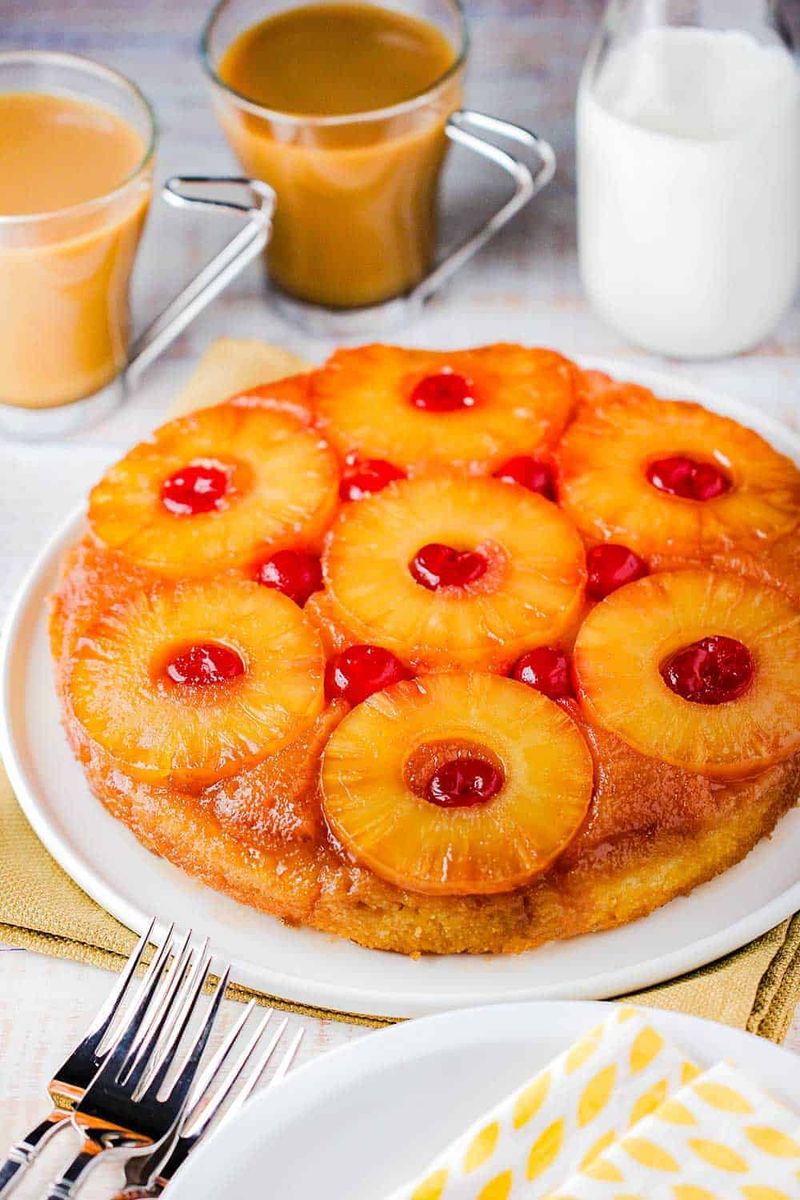
Imagine the sweet, nostalgic aroma of a Pineapple Upside-Down Cake, straight out of the oven. This classic recipe from the 1950s is a delightful blend of buttery caramel, tangy pineapple, and soft vanilla cake. The juicy rings of pineapple, crowned with cherries, create a visually stunning top. This cake, often baked in a cast iron skillet, was a favorite at family gatherings.
The combination of flavors and textures makes it irresistible, especially when served warm. It’s not just a cake; it’s a slice of vintage Americana that continues to bring smiles to faces today.
Red Velvet Cake
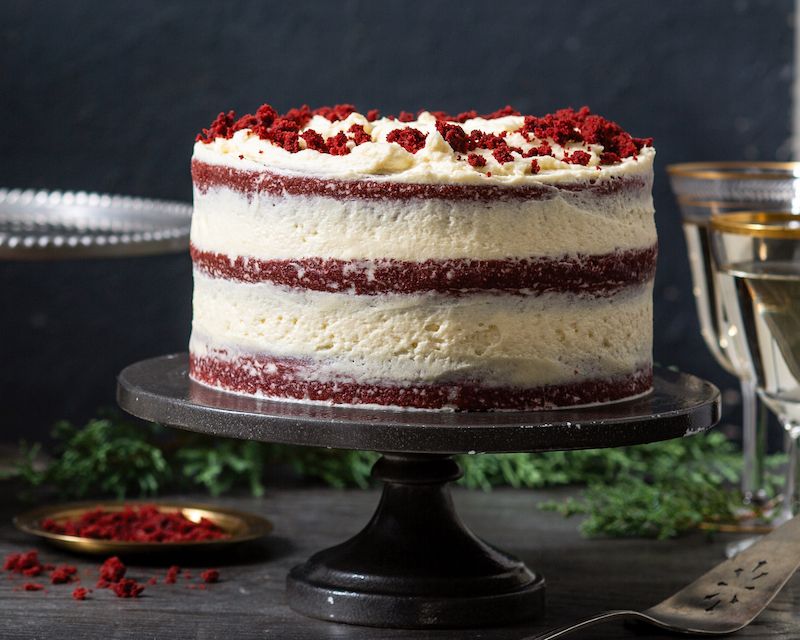
Red Velvet Cake, with its vivid color and rich taste, holds a special place in 1950s culinary history. Its mysterious origin adds to its allure, with layers of velvety texture and a hint of cocoa.
Topped with a tangy cream cheese frosting, this cake became an icon of elegance and sophistication. The red hue is said to symbolize romance, making it a popular choice for special occasions. Its unique flavor profile ensures that it remains a timeless favorite.
Did you know? Some believe its red color was initially due to a reaction between acidic vinegar and buttermilk.
Lemon Chiffon Cake
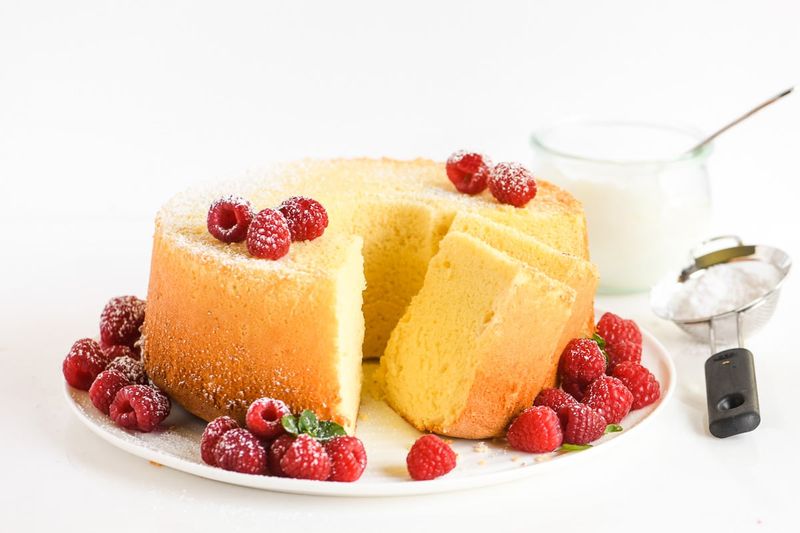
Lemon Chiffon Cake offers a refreshing twist on traditional cakes, embodying the light-heartedness of the 1950s. Its creation marked a revolution in baking, combining the richness of butter cakes with the fluffiness of angel food cakes.
With its zesty lemon flavor and delicate crumb, it was a favorite among those seeking a lighter dessert option. The cake’s airy texture is achieved using whipped egg whites, providing a melt-in-your-mouth experience.
Did you know? This cake was invented in the late 1920s but gained immense popularity in the ’50s for its delightful taste and innovative approach.
Black Forest Cake

Black Forest Cake, a decadent dessert inspired by Germany’s Black Forest region, became wildly popular in the 1950s. This indulgent cake features layers of rich chocolate sponge, sweet cherries, and fluffy whipped cream.
The contrast of textures and flavors creates an unforgettable experience. Traditionally, it’s decorated with chocolate shavings and additional cherries for a touch of elegance. Its name is derived from the specialty liquor of the region, Schwarzwälder Kirschwasser.
The cake’s luxurious taste and appealing presentation made it a showstopper at parties and special events, earning its place in dessert history.
Angel Food Cake
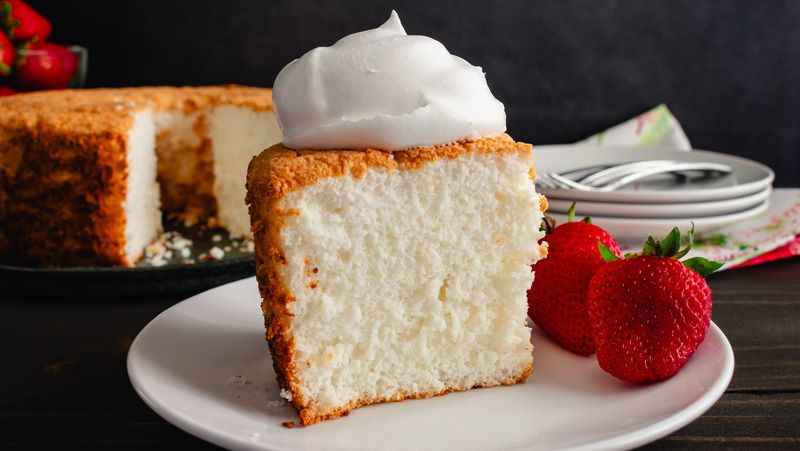
Angel Food Cake, known for its light and airy texture, was a staple in 1950s kitchens. Made primarily from egg whites, it offers a fat-free alternative to richer cakes while maintaining a delightful taste.
Served with fresh berries or a dusting of powdered sugar, it was a versatile dessert option for any occasion. Its simple yet elegant presentation made it a favorite for afternoon teas and family gatherings.
The cake’s unique preparation technique, using a tube pan and cooling upside down, ensures its delicate structure remains intact, providing a taste of nostalgia with every bite.
Carrot Cake
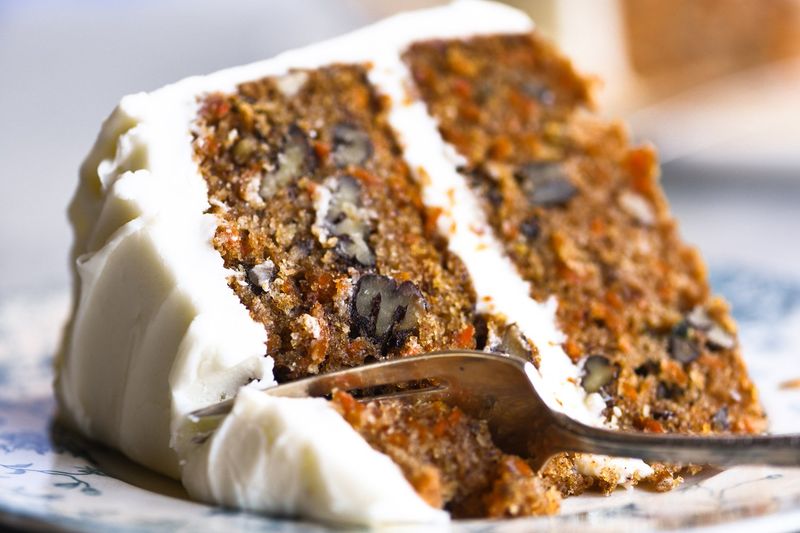
Carrot Cake emerged in the 1950s as a healthier dessert alternative, with grated carrots adding moisture and sweetness. This cake’s wholesome ingredients and spiced flavor profile quickly won over home bakers.
The cream cheese frosting adds a tangy richness, perfectly balancing the cake’s warm spices. Topped with walnuts or coconut, it offers a delightful crunch.
The cake symbolizes innovation, transforming simple pantry staples into a beloved dessert. Today, it continues to be a symbol of comfort and ingenuity, appealing to those seeking a taste of tradition with a modern twist.
Chocolate Fudge Cake
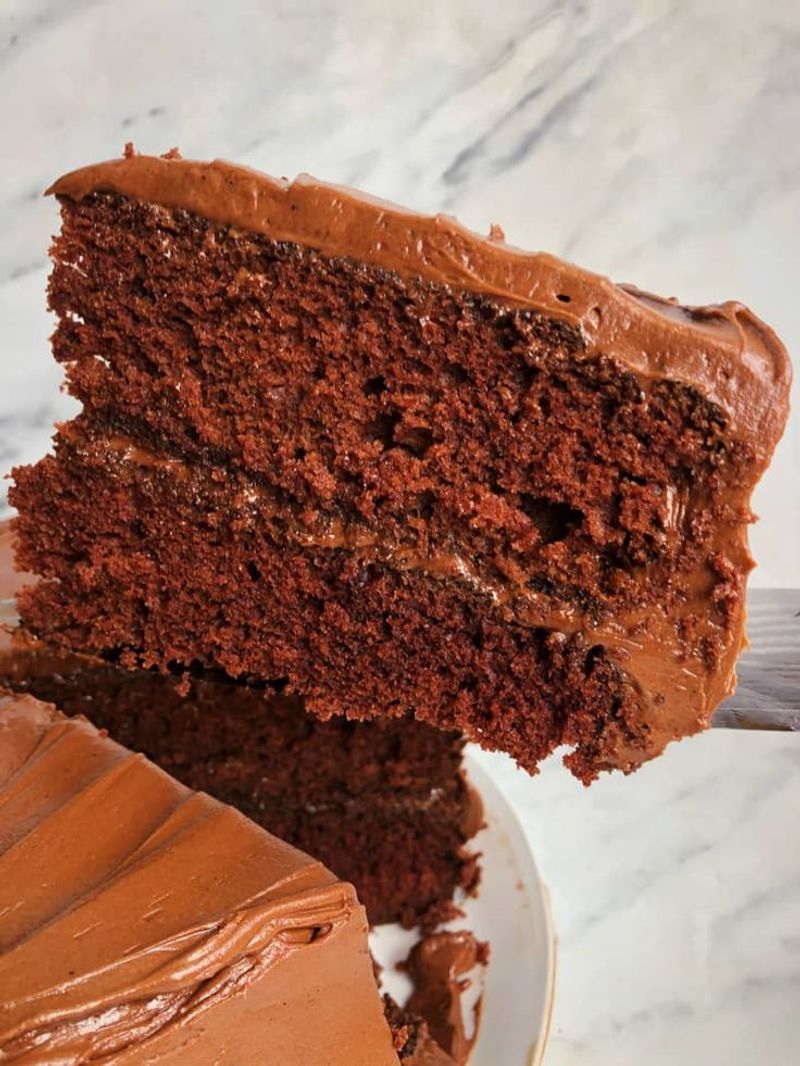
Chocolate Fudge Cake, with its intensely rich flavor and dense texture, became a sensation in the 1950s. This indulgent cake combines the best of chocolate with a luscious fudge-like consistency.
The deep cocoa taste and smooth ganache topping make it a chocoholic’s dream. Often served with a scoop of vanilla ice cream, it delivers a perfect balance of flavors.
The cake’s decadent nature ensures it’s a hit at any gathering, offering a slice of pure bliss. It’s a true testament to the love of chocolate that defined the era’s dessert landscape.
Hummingbird Cake
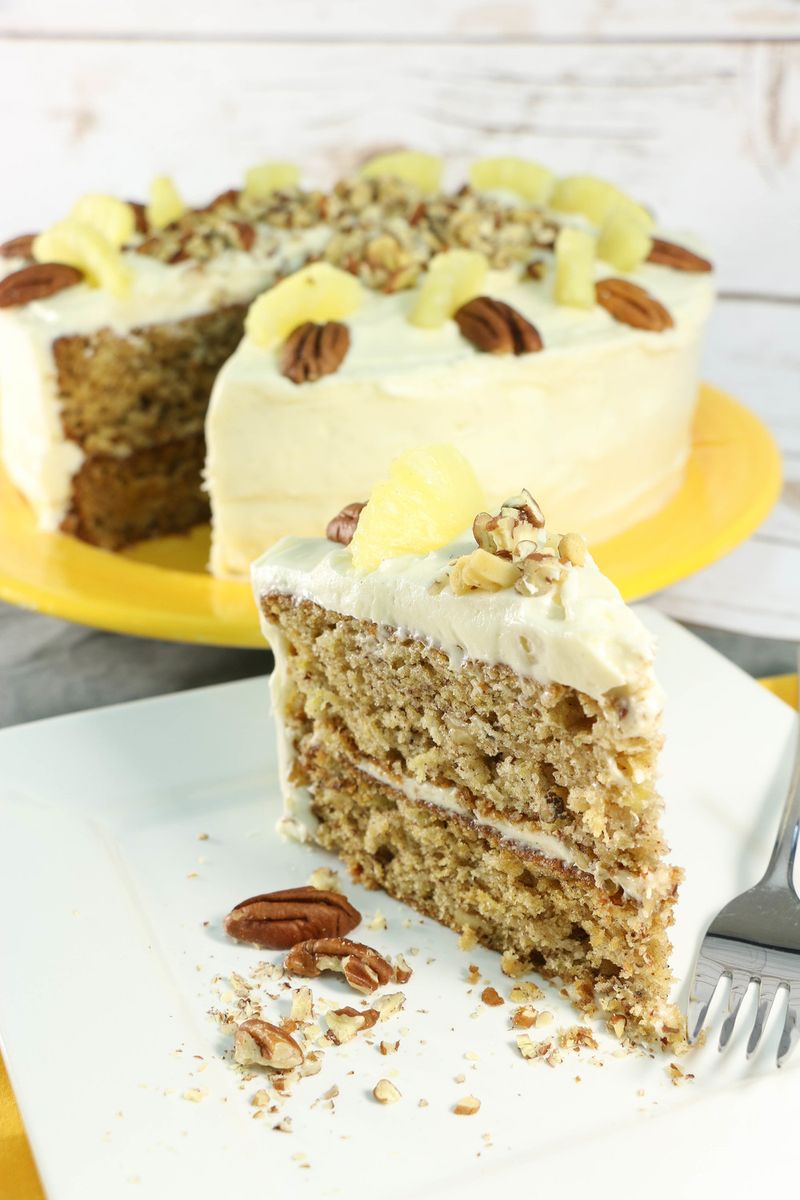
Hummingbird Cake, with its tropical flair, soared in popularity during the late 1950s. This Southern delight combines bananas, pineapples, and pecans, resulting in a moist, flavorful cake.
The addition of warm spices and a creamy frosting creates a harmonious blend of tastes. Its intriguing name is said to be derived from the cake’s sweetness, which is irresistible, much like nectar to a hummingbird.
This cake encapsulates the essence of Southern hospitality, often served at gatherings and celebrations, leaving a lasting impression on all who taste it.
Coconut Layer Cake
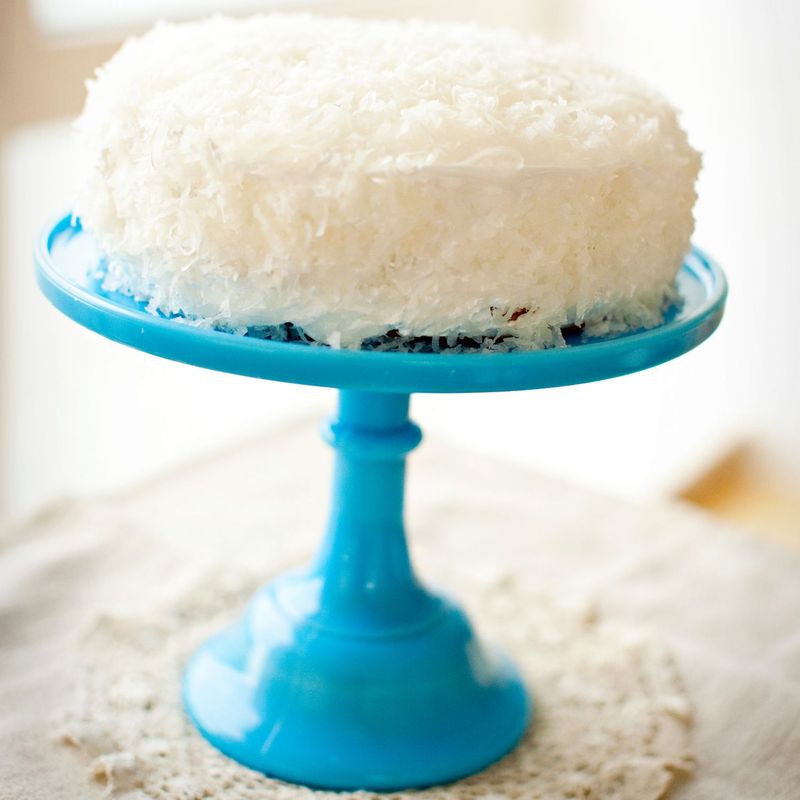
Coconut Layer Cake, a quintessential 1950s dessert, brings a taste of the tropics to the table. Its soft, fluffy texture and creamy coconut frosting make it a standout treat.
The cake is often layered, with each slice revealing a delicate crumb and coconut-infused sweetness. Topped generously with shredded coconut, it offers a delightful contrast of textures.
This cake was a popular choice for festive occasions, embodying the era’s love for exotic ingredients and flavors. Its timeless appeal continues to captivate those who enjoy a taste of nostalgia.
Spice Cake

Spice Cake captures the cozy essence of the 1950s, featuring an aromatic blend of cinnamon, nutmeg, and cloves. Its inviting warmth made it a favorite for autumn and winter gatherings.
The cake’s tender crumb, complemented by a sweet caramel glaze or cream cheese frosting, provides a comforting treat. Often paired with a hot cup of coffee or tea, it evokes memories of cozy kitchen chats.
The use of spices, once considered exotic, highlights the adventurous culinary spirit of the decade, making this cake a cherished classic that continues to warm hearts.
Battenberg Cake
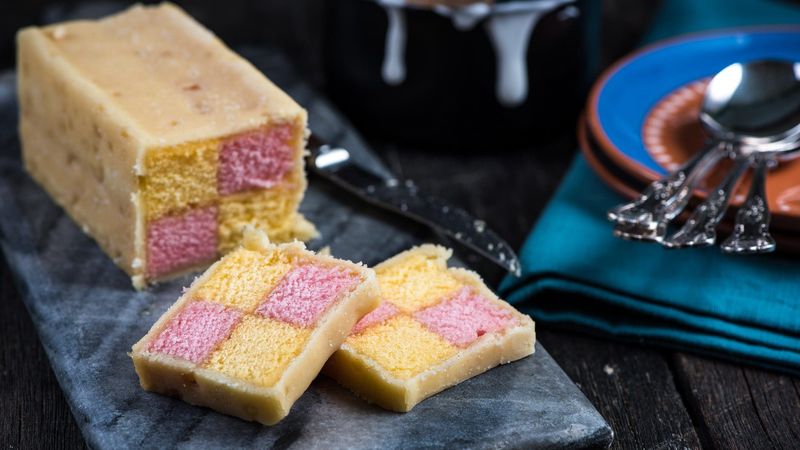
Battenberg Cake, with its eye-catching checkerboard pattern, brought a touch of whimsy to 1950s tea parties. This British classic features pink and yellow sponge, wrapped in a layer of marzipan.
The cake’s playful appearance and delicate almond flavor make it a delightful centerpiece. It requires precision in baking and assembly, showcasing the baker’s skill and creativity.
The Battenberg’s distinctive look and taste have made it a timeless favorite, capturing the playful and elegant spirit of the mid-20th century. It’s a charming treat that never fails to impress.
Opera Cake

Opera Cake, an opulent dessert with French origins, became a sophisticated choice in the 1950s. Its intricate layers of almond sponge, coffee buttercream, and chocolate ganache create a symphony of flavors.
The cake is typically topped with a glossy chocolate glaze, making it as visually appealing as it is delicious. It represents the elegance and refinement of the era, often served at upscale gatherings.
The name “Opera” suggests a rich, layered performance, much like the cake’s complex taste. This dessert remains a testament to the artistry of baking and the love of indulgent flavors.
Fruitcake
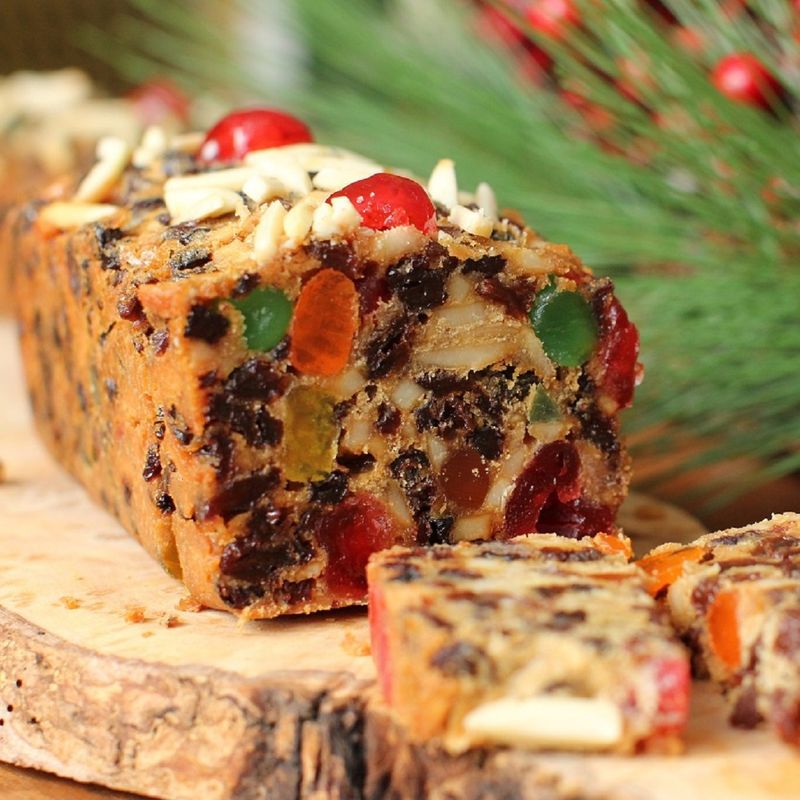
Fruitcake, a traditional holiday staple, found its stride in the 1950s with a classic recipe full of dried fruits and nuts. Despite its divisive reputation, it remains a symbol of festive cheer.
The cake’s dense texture and rich flavor improve with age, often wrapped in liquor-soaked cloth for preservation. It’s a labor of love, reflecting the time and care that goes into holiday baking.
While opinions on fruitcake vary, its enduring presence in celebrations speaks to its special place in culinary history, capturing the essence of joyous gatherings and shared traditions.
Gingerbread Cake
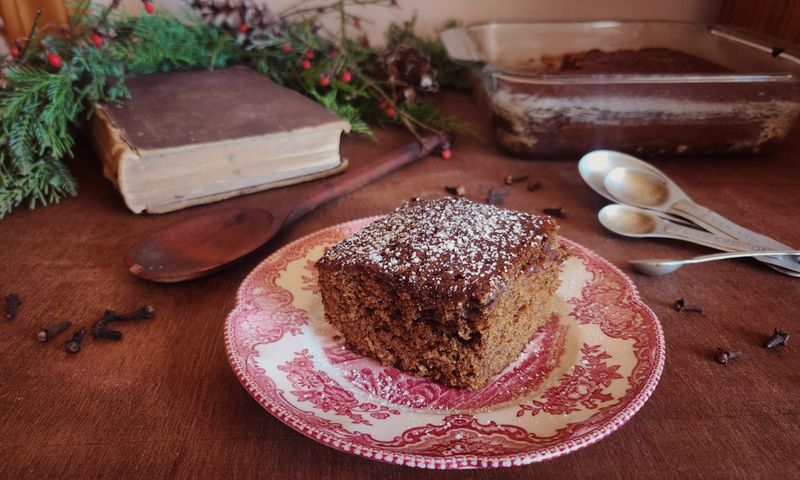
Gingerbread Cake, with its aromatic spices and warm molasses flavor, became a beloved treat in the 1950s. This cake brings a sense of coziness and nostalgia, perfect for wintertime indulgence.
Rich in cinnamon, ginger, and cloves, it’s often accompanied by whipped cream or a lemon glaze, balancing its deep flavors. The cake’s hearty texture makes it satisfying and comforting.
Celebrated for its festive flair, Gingerbread Cake is associated with holiday traditions and frosty evenings by the fire, making it an enduring favorite for those seeking warmth and sweetness.
Victoria Sponge Cake

Victoria Sponge Cake, named after Queen Victoria, became a tea-time classic in the 1950s. Its simple elegance lies in its light sponge layers filled with jam and cream.
The cake’s straightforward yet delightful taste made it a popular choice for gatherings and informal occasions. Dusted with powdered sugar, its presentation is both charming and inviting.
This cake reflects the mid-century appreciation for simplicity and quality, offering a taste of British tradition. Its timeless appeal continues to win hearts, celebrating the art of home baking.
Devil’s Food Cake
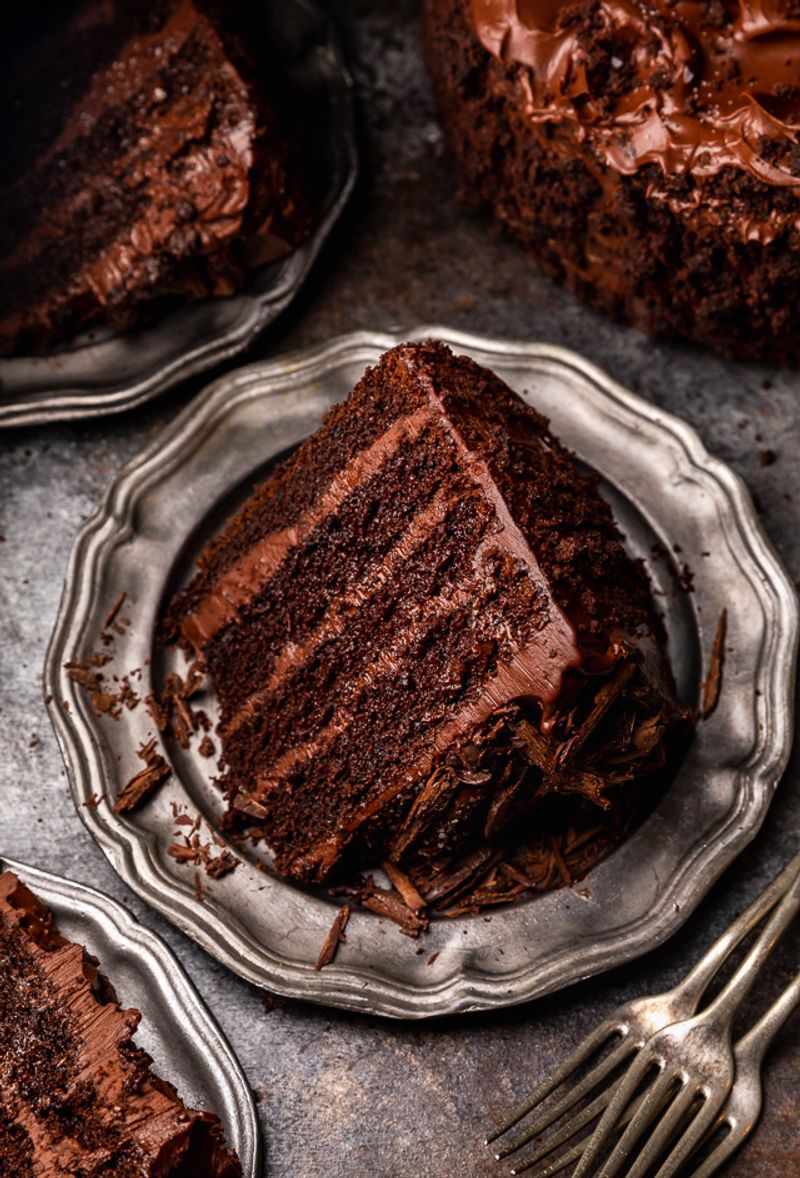
Devil’s Food Cake, with its deeply rich and chocolatey profile, was a daring choice for dessert in the 1950s. This cake distinguishes itself with its dark, moist crumb and intense cocoa flavor.
Paired with a luscious chocolate frosting, it creates a sinful delight for chocoholics. Its name hints at indulgence, offering a decadent alternative to lighter cakes.
With its irresistible allure, Devil’s Food Cake became a star of celebrations, embodying the era’s love for bold flavors and opulent treats. It’s a classic that continues to tempt taste buds today.
Banana Cake
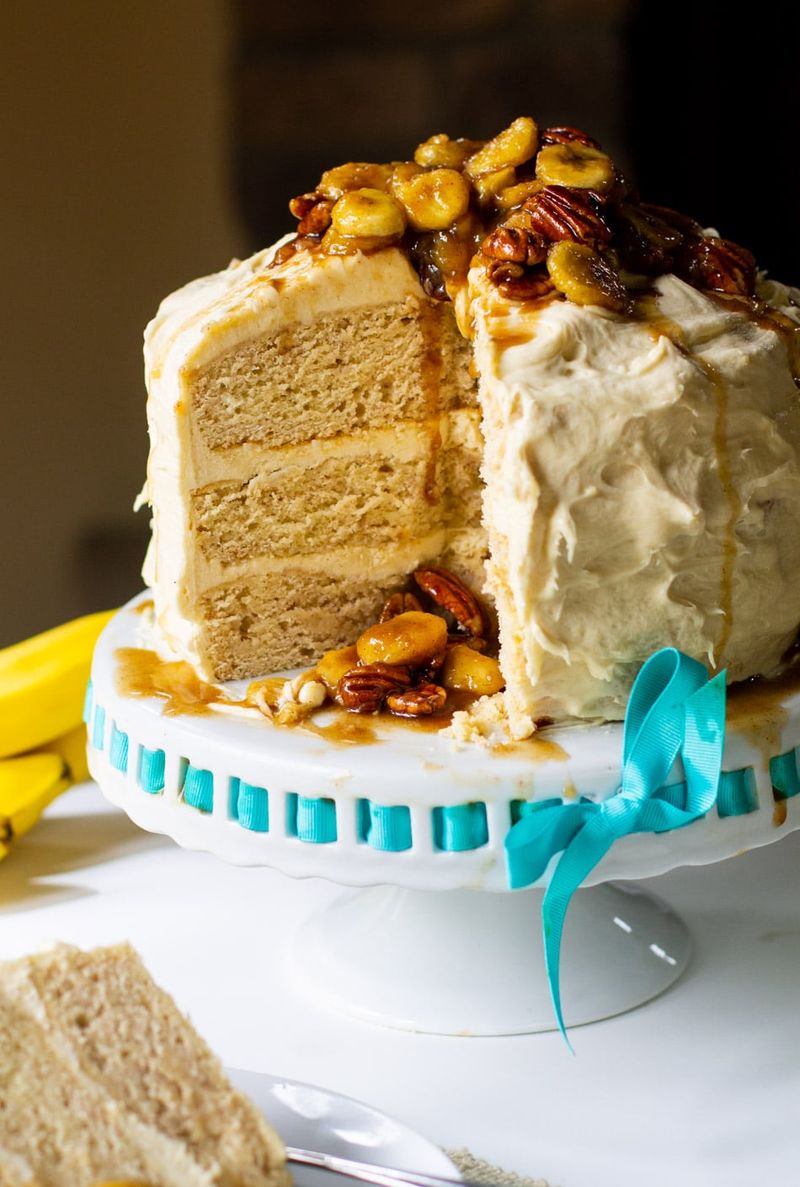
Banana Cake, with its tender crumb and fruity sweetness, became a beloved choice in the 1950s. This cake utilizes ripe bananas to create a moist texture and rich flavor.
Often topped with cream cheese frosting or a simple glaze, it strikes a perfect balance between sweetness and tang. The inclusion of nuts adds a delightful crunch.
Banana Cake is cherished for its ability to transform overripe bananas into a delectable dessert, showcasing the ingenuity of home bakers. It’s a comforting classic that remains a family favorite.
Marble Cake
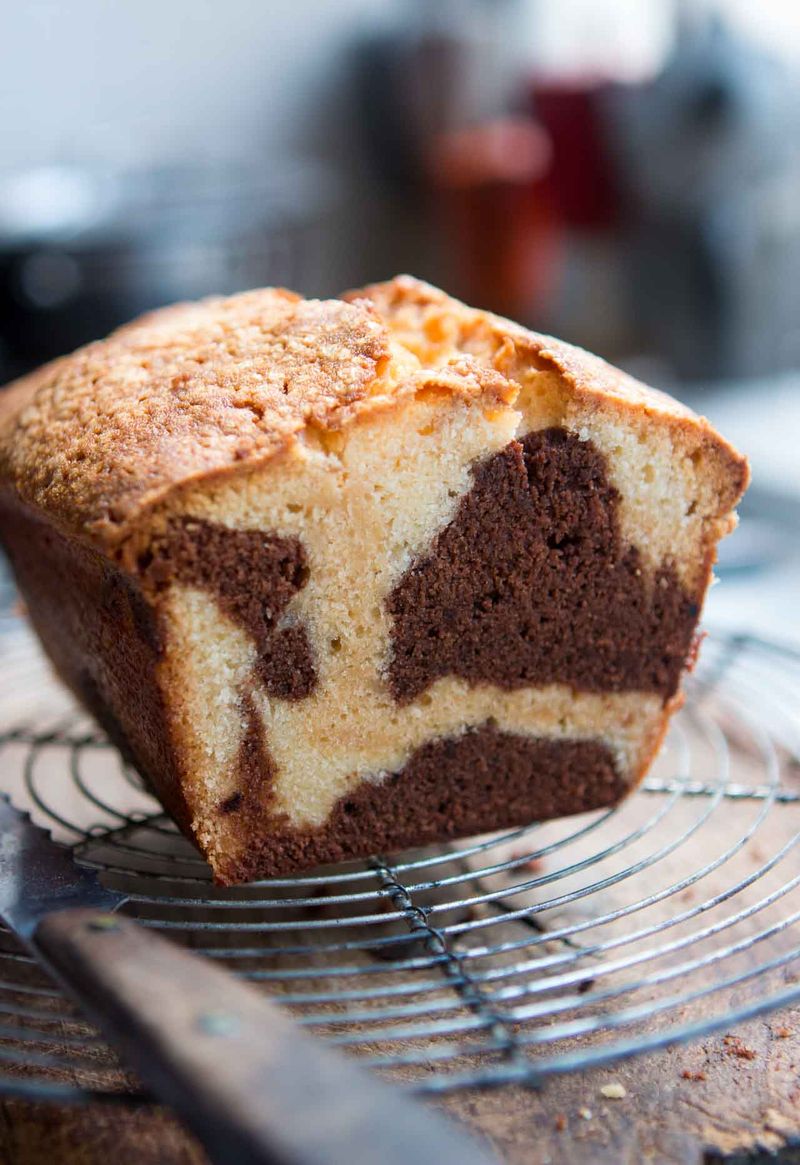
Marble Cake, with its striking swirls of chocolate and vanilla, was a visual and culinary delight in the 1950s. This cake offers the best of both worlds, combining two classic flavors in one bite.
The technique of swirling batter creates a unique pattern, making each slice a work of art. Its moist texture and balanced sweetness make it suitable for any occasion.
Marble Cake reflects the creativity and playful spirit of mid-century baking, providing a treat that’s as enjoyable to make as it is to eat. It’s a delightful nod to the past that still charms today.
Leave a comment